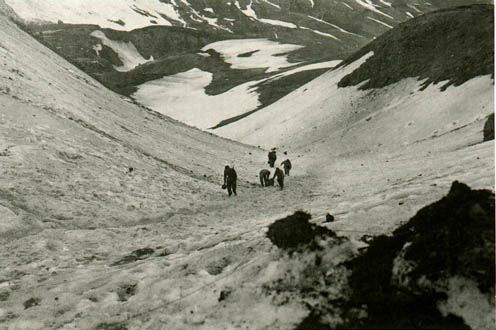
Many don’t know, however, that this archipelago to the southeast of the Bering Sea had a place in the memories of some Second World War veterans.
The Aleutian Islands Campaign took place from June 1942 to August 1943. It was a challenging campaign, not only because of the enemy force, but because of the geography. It was also the only action fought on North American soil during the war. Canada’s contribution was its army’s second largest in the Pacific theatre. One of its battles, the Battle of Attu, marked its 80th anniversary on May 11, but still, the campaign is considered a “Forgotten Battle.”
“144,000 people were stationed up there, and nobody knows,” said Karen Abel, former historical consultant for the U.S. National Park Service whose grandfather Robert W. Lynch was a Royal Canadian Air Force fighter pilot with No. 111 (Fighter) Squadron that served in the Aleutian.
Just months after its surprise strike on Pearl Harbor, Hawaii, on Dec. 7, 1941, the Japanese launched another offensive in the eastern Pacific, bombing the U.S. naval facility at Dutch Harbor on Amaknak Island in the Aleutians on June 3-4, 1942.
The Japanese invaded nearby Kiska Island days later, on June 6, and Attu Island the following day. The invaders met little resistance from the local Indigenous Aleuts who were subsequently sent to internment camps. The Japanese proceeded to set up defences and within a year, there were 5,400 troops on Kiska and 2,500 on Attu. Historians believe the move was designed to either divert U.S. troops in the central Pacific or hinder the U.S. from invading Japan through Alaska.
“This enemy incursion into the North American zone was necessarily a source of grave anxiety to Canada as well as the United States,” wrote Colonel Charles P. Stacey in his official history of Canada’s role in the Second World War.

In total, four Canadians died.
Canadians were then called on to help the Americans, battling as much with the land as they did with the Japanese.
“Weather was their worst enemy,” Abel said. And, indeed, most of the Canadian casualties were caused by the weather.
With the Allied bombing campaign ineffective in evicting the Japanese from the islands—and with a local naval blockade similarly futile—the Americans launched the Battle of Attu, a ground assault on the island on May 11, 1943. Some 15,000 U.S. troops participated in the two-plus-week fight.
“It ended in complete annihilation of the Japanese defenders, who made their final Banzai charge on 28 May,” wrote Stacey. “The Americans took eleven prisoners; all the rest were killed in action or committed suicide.” Some 2,500 dead.
With Attu in Allied hands, plans were quickly made to recapture Kiska. And Canada stood to take a much larger role. Its contribution included the Canadian component of the First Special Service Force and four infantry battalions: The Canadian Fusiliers (City of London Regiment), The Winnipeg Grenadiers, The Rocky Mountain Rangers and Le Régiment de Hull. The 24th Reserve (Kootenay) Field Regiment, Royal Canadian Artillery, and some smaller units completed the group. It totalled 4,800 troops.
But when they went ashore on Aug. 15, they met no resistance. Within a couple of days, it was clear that the Japanese had evacuated. By Aug. 24, the island was declared secure by the Americans, thus ending the campaign. In total, four Canadians died from enemy booby-traps and friendly fire.
While some military members never saw explosive fighting, they did witness its impacts, with many Canadian troops meeting with Americans post-battle. As one of the squadron’s acting sergeants recounted to his son: “It must have been rough. Those commandos were a tough bunch.”
Read more about Canada and the Aleutian campaign in the May/June 2023 issue of Legion Magazine.
Advertisement










